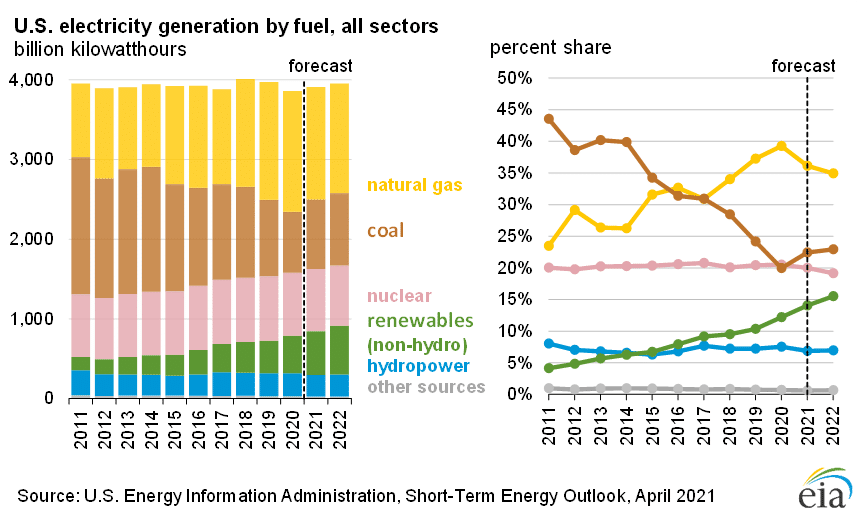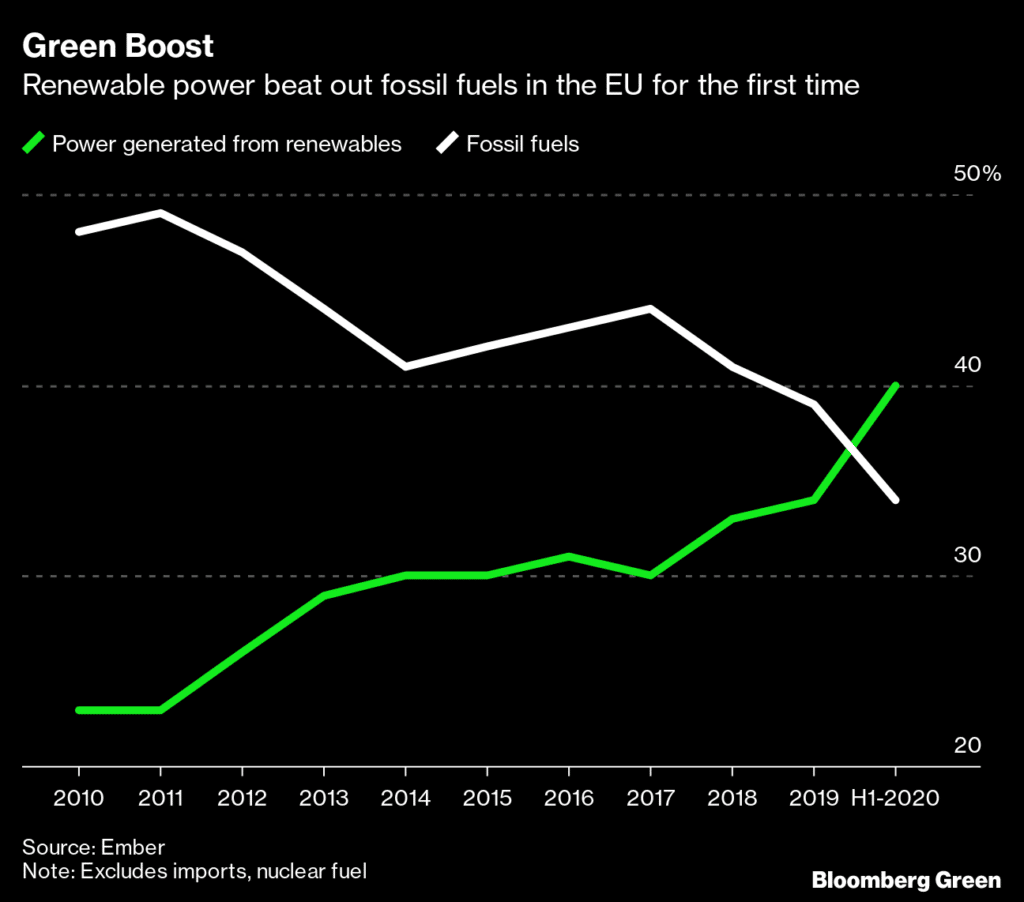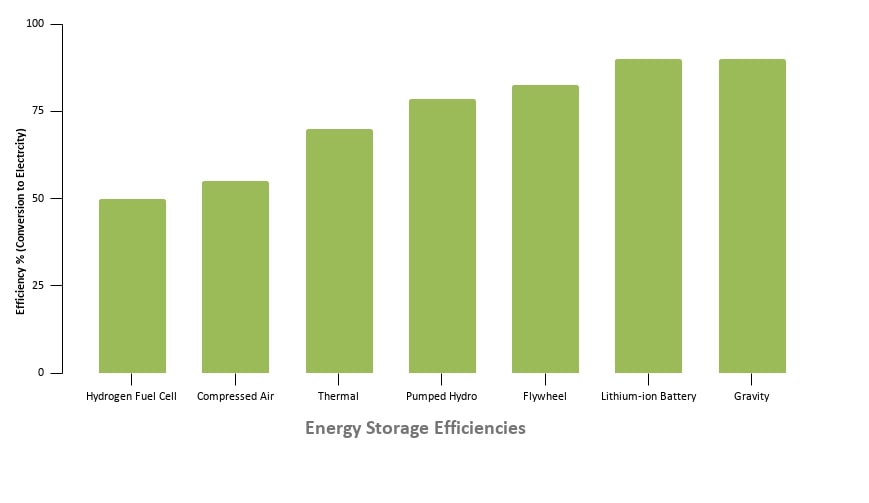One of the latest advancements in cutting-edge clean energy technology is no more complicated than what makes apples fall from trees. Energy start-ups around the world have begun using gravity as an alternative form of clean energy storage. It may help mitigate the disadvantages of other energy storage techniques, some of which have become environmental issues in themselves despite all being part of the shift away from fossil fuels.
—
The Rise In Renewable Energy
Despite the prevailing dominance of the fossil fuel industry, renewable energy is already here, and the sector is growing fast. Last year saw record lows in various countries for coal and natural gas electricity generation, including in the EU and the US, and 2021 is expected to show similar data as pandemic-delayed projects get the green light to go ahead.


One of the main challenges for renewables has always been how to store the power generated, and then how to employ it reliably on command. Hence today’s energy storage boom as cleaner technologies gain traction.
How It Works
In gravity energy storage, quite literally, heavy things are dropped, they spin turbines as they fall, and that generates electricity.
Physicists everywhere will be quick to point out that gravity is not generating electricity but providing the force that releases the energy that then generates electricity.
Recall your high school physics for just a moment: when something heavy is up on a high place, it holds potential energy. When that thing falls, that potential energy is released as kinetic energy, i.e. the energy of moving objects.
Taking it one step further back, that potential energy only got there by some other energy source putting the thing up high in the first place. In these systems, that initial energy is excess electricity from other clean sources, like solar panels or wind turbines. Hence this all being a way to store energy, not create it.
(Any energy ‘source,’ for that matter, is not actually sourcing energy, just transferring it from one thing to another in a way that’s useful for us. So goes one of the most fundamental laws of science, the first law of thermodynamics: energy is never created or destroyed; it only changes form).
Prototypes are already moving into more advanced stages. A start-up in Edinburgh, Gravitricity, plans to use abandoned mine shafts and weights totaling 12,000 tons to generate electricity that’ll power 63,000 homes per hour. In Switzerland, the company Energy Vault uses high towers with cranes and precisely timed concentric ring drops. Both companies plan to build commercial plants within the next couple of years and to expand internationally.
In Comparison To Other Storage Technologies
The idea to harness gravity in this way is really the same concept as hydropower, currently the most common form of long-term clean energy storage: water goes from a high place to a lower place and spins turbines as it falls. Lifting water back up to a high place takes energy just the same, either naturally, by the sun through evaporation and the rest of the water cycle, or by machines, when it’s pumped uphill to be stored hydro.
Pumping, storing and then releasing large amounts of water is not too difficult, but there can be problems, like disrupted habitats and water quality downstream. Dropping heavy slabs of rock or concrete doesn’t have these downsides.
Another existing alternative is compressed air energy storage, a rather promising technology, but air gets very hot when compressed to such high pressures, and like with stored hydropower there are limited available geological locations.
The most ubiquitous way to store energy is currently lithium-ion batteries, popular for their high energy density, light weight, low maintenance, and declining cost.
Lithium is a type of metal that needs to be mined, though, and as demand for these batteries rises so does the strain on the ecosystems and communities wherein those mines are operated. In Tibetan towns and parts of Bolivia, Chile, and Argentina, lithium mines have led to toxic leaks into local water supplies and are highly resource-intensive. Li-ion batteries are a force in the transition to clean energy, but the more alternatives to them the better.
More Pros Than Cons (For Now)
Gravity energy storage is getting noticed by investors and governors in large part for being so simple – all one needs are heavy objects, winding gear, and either a high tower or a very deep drop. There are minimal raw material requirements, a small land footprint per kWh, no harmful chemicals, low operational costs and high round-trip efficiency (about 80%).

Source: The World Energy Council, 2019.
Perhaps most crucially, the investment and charging costs are far lower than those of other technologies – up to 50% cheaper than battery storage and only about a third of pumped hydro.
The cons are at the moment apparently few, mostly to do with design optimizations, but as these systems are new it’ll take time to see what other issues come up and need sorting.
No energy technology will ever be perfect, as both the laws of physics and economics ensure, but new innovations mean new momentum and more options in the increasingly imperative clean energy transition.
This article was written by Debbie Sanchez.
You might also like: Air Pollution in Paris










![The Statistics of Biodiversity Loss [2020 WWF Report]](https://u4d2z7k9.rocketcdn.me/wp-content/uploads/2020/12/lprwinkyTHB-544x306.jpg)





